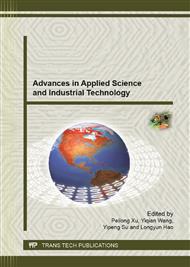p.983
p.987
p.992
p.998
p.1007
p.1013
p.1018
p.1022
p.1026
Production of Recombinant Melittin by Auto-Induction in Escherichia coli
Abstract:
Melittin is a novel peptide of biological activity isolated from bee venom. It has potential application value in medicine and agriculture. Here we encoded melittin gene with the EK recognition sequence in the N-terminus into expression vector pGEX-2T.The expressed fusion protein, which is about 29KDa, identified by Western Blot. To facilitate large-scale production of recombinant GST-fusion protein, we optimized different expression conditions to increase the overall production of the fusion protein. The production of the protein had increased about 10-fold when we used an auto-inducing medium. The GST fusion protein showed an equivalent activity with the natural melittin after digested by EK and can inhibited the proliferations of several human cancer lines. The expression system described in this study provides a feasible way for producing melittin in further studies.
Info:
Periodical:
Pages:
1007-1012
Citation:
Online since:
September 2013
Authors:
Keywords:
Price:
Сopyright:
© 2013 Trans Tech Publications Ltd. All Rights Reserved
Share:
Citation:


